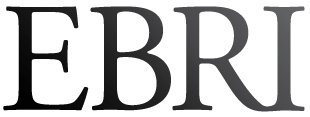Summary
Savings Needed for Health Expenses for People Eligible for Medicare: Some Rare Good News
- Medicare generally covers only about 60 percent of the cost of health care services (not including long-term care) for Medicare beneficiaries ages 65 and older, while out-of-pocket spending accounts for 13 percent.
- The Patient Protection and Affordable Care Act (PPACA) reduces cost sharing in the Part D “donut hole” down to 25 percent by 2020. This year-to-year reduction in coinsurance will continue to reduce savings needed for health care expenses in retirement, all else equal, for individuals with the highest prescription drug use.
- EBRI analysis finds 1–2 percent reductions in needed savings among individuals with median drug use and 4-5 percent reductions in needed savings among individuals at the 90th percentile in drug use since EBRI’s 2011 analysis.
- A 65-year-old man would need $70,000 in savings and a woman would need $93,000 in 2012 if each had a goal of having a 50 percent chance of having enough money saved to cover health care expenses (excluding long-term care) in retirement.
- A 65-year-old couple, both with median drug expenses, would need $163,000 in 2012 to have a 50 percent chance of having enough money to cover health care expenses (excluding long-term care) in retirement, $227,000 to have a 75 percent chance of covering those expenses, and $283,000 to have a 90 percent chance of doing so. These estimates are 1–2 percent lower than the savings targets estimated in 2011.
IRA Asset Allocation, 2010
- The EBRI IRA Database is an ongoing project of the Employee Benefit Research Institute that currently contains information on 14.85 million accounts of 11.1 million unique individuals with total assets of $1.002 trillion, as of year-end 2010.
- Analysis of the EBRI IRA Database finds that about half of all individual retirement account (IRA) assets are allocated to equities, although this varied with age, account balance, and IRA type. Those older, having higher account balances, or owning a traditional-rollover IRA had, on average, lower allocations to equities.
- Roth IRA owners were much more likely to have 90 percent or more of their account invested in equities than owners of the other types. Above age 35, the likelihood that an IRA owner has more than 90 percent in equities decreases. IRA owners with higher account balances were less likely to have extreme asset allocations.

